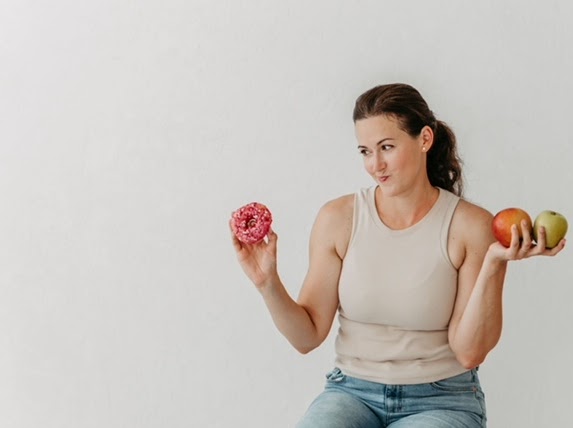If you’ve ever enjoyed a perfectly cooked steak only to find yourself craving something sweet immediately after, you’re not alone. This phenomenon is more common than you might think, and there’s actually science behind it. From the way our bodies process macronutrients to how our taste buds and hormones respond to food, there are several factors at play. In this blog post, we’ll dive deep into the reasons why steak makes you crave dessert, explore the science of food cravings, and provide tips on how to satisfy your sweet tooth in a healthier way.
1. The Role of Macronutrient Balance
Steak is rich in protein and fat, two essential macronutrients that keep you full and provide long-lasting energy. However, your body naturally seeks balance. After consuming a high-protein, high-fat meal, your body may signal the need for carbohydrates to restore equilibrium.
How Macronutrient Balance Works:
- Protein and fat digest more slowly than carbohydrates, leading to prolonged satiety.
- Your body recognizes that it hasn’t received a quick energy source, prompting a craving for fast-digesting carbs, often in the form of dessert.
- The contrast between savory (umami-rich) steak and sweet flavors enhances overall meal satisfaction.
This is why a juicy steak often leaves you wanting a sugary treat to round out the meal.
2. The Science of Taste and Contrast
One of the biggest reasons steak makes you crave dessert is flavor contrast. Our taste buds love variety, and when we eat something rich and savory, our brain often desires the opposite flavor to create a sense of balance.
The Science Behind Flavor Contrast:
- Umami (savory) flavors found in steak activate specific taste receptors that enhance sweetness perception.
- Fatty foods coat the tongue, making sugary treats seem even more appealing.
- Sweet flavors naturally complement salty or fatty foods, creating a well-rounded dining experience.
This is why pairing steak with a sweet sauce, such as balsamic glaze or a fruity reduction, can also satisfy this craving without the need for dessert.
3. Blood Sugar and Insulin Response
Another key factor in dessert cravings after steak is the insulin response. While steak itself doesn’t contain carbohydrates, consuming a protein-rich meal still triggers an insulin release.
Why This Happens:
- When you eat a protein-heavy meal, your pancreas secretes insulin to help regulate amino acids in your bloodstream.
- Insulin also influences blood sugar levels, often leading to a mild drop post-meal.
- This drop in blood sugar can signal your brain to crave a fast-digesting carbohydrate source, hence the urge for dessert.
Your body perceives the need for quick energy, and sugary foods provide the fastest route to glucose replenishment.
4. The Psychological and Habitual Factors
Craving dessert after a meal isn’t always about biology, it’s also influenced by habits and psychological conditioning.
Common Behavioral Triggers:
- Cultural Norms: Many people grow up eating dessert after dinner, reinforcing the habit over time.
- Emotional Eating: Sweet foods are often associated with comfort, celebration, and reward.
- Conditioned Response: If you frequently eat dessert after steak, your brain starts expecting it, triggering cravings even when you don’t need sugar.
Breaking the habit may take time, but being mindful of these factors can help you make more intentional food choices.
5. Dopamine and the Reward System
Steak triggers the release of dopamine, a neurotransmitter associated with pleasure and reward. Interestingly, so does sugar.
How Dopamine Influences Cravings:
- Protein-rich foods stimulate dopamine production, creating a sense of satisfaction.
- Sugar offers a quick dopamine boost, reinforcing the desire for dessert.
- The brain seeks repeated pleasure, making the post-steak sugar craving a learned behavior over time.
Since both steak and sweets are pleasurable, your brain links them together, making dessert feel like a natural follow-up.
6. How to Satisfy Your Dessert Craving in a Healthier Way
If you love having something sweet after steak but want to make healthier choices, here are some alternatives:
Healthy Dessert Swaps:
- Dark Chocolate: A square of 70%+ dark chocolate provides antioxidants with minimal sugar.
- Fruit-Based Desserts: Fresh berries, baked apples, or grilled pineapple satisfy sweetness naturally.
- Greek Yogurt with Honey: Adds protein while curbing sugar cravings.
- Nuts and Dried Fruit: A small handful of almonds with dates mimics the sweet-savory contrast.
By choosing nutrient-dense options, you can enjoy the satisfaction of dessert without the sugar crash.
7. Mindful Eating and Breaking the Cycle
If you find yourself automatically reaching for dessert, practicing mindful eating can help break the habit.
Mindful Eating Strategies:
- Pause Before Dessert: Check if you’re truly hungry or just following a routine.
- Savor Your Meal: Eating slowly allows your brain to register fullness and satisfaction.
- Stay Hydrated: Sometimes, cravings are mistaken for thirst.
- Change Your Routine: Go for a short walk after meals instead of reaching for sweets.
With awareness and small changes, you can manage cravings without feeling deprived.
Conclusion: Understanding and Managing Post-Steak Dessert Cravings
Craving dessert after eating steak is a combination of biological, psychological, and habitual factors. From macronutrient balance and blood sugar regulation to dopamine release and cultural conditioning, many elements play a role in why you reach for something sweet.
By understanding these mechanisms, you can make mindful choices that align with your health goals. Whether you opt for a small, healthy treat or decide to break the habit altogether, listening to your body and practicing moderation is key.
Next time you enjoy a steak, consider experimenting with natural sweet flavors, mindful eating, and balanced nutrition to keep cravings in check. Happy dining!
SOURCES:
Avena, N. M., Rada, P., & Hoebel, B. G. (2008). Evidence for sugar addiction: Behavioral and neurochemical effects of intermittent, excessive sugar intake. Neuroscience & Biobehavioral Reviews, 32(1), 20–39. https://doi.org/10.1016/j.neubiorev.2007.04.019
Harvard T.H. Chan School of Public Health. (n.d.). Cravings. The Nutrition Source. Retrieved from https://www.hsph.harvard.edu/nutritionsource/healthy-weight/diet-reviews/cravings/
Rada, P., Avena, N. M., & Hoebel, B. G. (2005). Daily bingeing on sugar repeatedly releases dopamine in the accumbens shell. Neuroscience, 134(3), 737–744. https://doi.org/10.1016/j.neuroscience.2005.04.043
Thanarajah, S. E., Backes, H., DiFeliceantonio, A. G., Albus, K., Cremer, A. L., Hanssen, R., … & Tittgemeyer, M. (2019). Food Intake Recruits Opiate and Chemosensory Pathways That Converge on Insular Cortex to Regulate Eating. Current Biology, 29(17), 3116–3128.e5. https://doi.org/10.1016/j.cub.2019.07.024
Yale University. (2024, March 20). Craving snacks after a meal? It might be food-seeking neurons, not an overactive appetite. ScienceDaily. Retrieved from https://www.sciencedaily.com/releases/2024/03/240320122517.htm
Yale University. (2018, December 27). Your brain rewards you twice per meal: When you eat and when food reaches your stomach. ScienceDaily. Retrieved from https://www.sciencedaily.com/releases/2018/12/181227111420.htm

